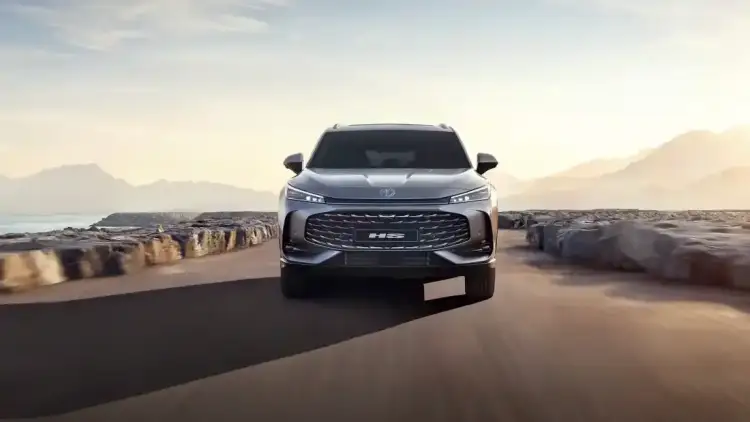- Key Features of the 4.0L V6 Powerplant
- Maintenance Essentials for Hot Climates
- Performance Enhancement Options
- Long-Term Reliability Factors
- FAQ
Explore the in-depth analysis of the FJ Cruiser engine specs for 2025. This guide is designed to offer you practical insights and advice that cater specifically to the challenges and requirements of Gulf region driving conditions. If you value reliable performance and cost-effective maintenance, you are in the right place!
Key Features of the 4.0L V6 Powerplant

This section dives into the essential performance metrics of the FJ Cruiser’s 4.0L V6 engine. It explains the strengths of the engine while addressing the concerns of reliability and ease of maintenance, ensuring you understand why these specs make a difference on the road.
Torque and Horsepower Breakdown
Enjoy a robust 278 horsepower at 5,600 RPM that delivers smooth and consistent acceleration.
Benefit from a remarkable 365 Nm torque observed at 4,400 RPM, ensuring you get ample power for both city driving and off-road adventures.
Experience the advantage of dual VVT-i technology, which enhances the engine’s responsiveness and overall performance.
Fuel Consumption Patterns
A valuable aspect for any driver is understanding fuel consumption. The data presented below compares the engine’s performance in different driving modes. This detailed view can help you plan your journeys more efficiently:
Driving Mode | City Consumption (L/100km) | Highway Consumption (L/100km) |
|---|---|---|
Standard | 16.8 | 13.1 |
4WD Enabled | 19.2 | 15.4 |
Maintenance Essentials for Hot Climates
Gulf region drivers understand that high temperatures demand a proactive approach to engine care. Maintaining your FJ Cruiser’s engine health requires routine checks and a focus on critical components facing harsh conditions.
Monthly Checklist for Engine Care
Inspect coolant levels to prevent overheating issues.
Clean or replace the air filter approximately every 15,000 km to ensure optimal airflow.
Schedule an oil change every 7,500 km to maintain smooth engine operations.
Verify belt tension regularly to avoid potential breakdowns.
Common Wear Parts in GCC Environments
Operating under high ambient temperatures and dusty conditions means you should monitor:
Radiator hoses, recommended for replacement every 3 years.
Spark plugs with an expected lifespan of around 40,000 km.
Engine mounts, which should be inspected annually for signs of wear.

Performance Enhancement Options
For drivers looking to enhance performance without breaking the bank, there are several practical upgrades available. These modifications not only improve engine performance but also ensure that the vehicle remains within GCC certified standards.
Affordable Upgrades Under AED/SAR 2,000
Install cold air intake systems to boost torque by approximately 5%.
Consider performance exhaust modifications to optimize engine breathing.
Explore ECU remapping services that can fine-tune engine responses according to driving habits.
Warranty-Safe Modifications
Use Toyota-certified oil filters to maintain warranty integrity.
Choose manufacturer-approved coolant types that are designed for high-temperature stability.
Always utilize genuine timing belt kits to ensure reliable long-term performance.
Long-Term Reliability Factors
Understanding long-term service intervals and parts availability can help you maintain your FJ Cruiser efficiently throughout its lifespan in challenging Gulf environments.
Expected Service Intervals
Plan for a major service every 100,000 km, with an estimated cost of AED/SAR 3,500-4,200.
Change transmission fluid every 80,000 km for optimal performance.
Replace differential oil biennially to ensure smooth handling and durability.
2025 Parts Availability Outlook
Engine rebuild kits are available at around AED/SAR 18,000, providing comprehensive solutions when needed.
Local dealership support offers reliable access to necessary parts and maintenance services.
Aftermarket alternatives from suppliers in Sharjah and nearby regions continue to be competitive and high-quality.

FAQ
Q1:What makes the 2025 FJ Cruiser engine specs ideal for Gulf region climates?
The 2025 FJ Cruiser engine is designed with features that enhance performance in high temperatures. Its cooling system, along with high-quality components such as durable radiator hoses and manufacturer-approved coolants, makes it particularly suitable for hot and dusty environments. Drivers can rely on its efficient fuel consumption and robust power output. Moreover, the recommended regular maintenance practices ensure that the engine remains in optimal condition under GCC certified standards.
Q2:How does the fuel consumption differ between standard and 4WD modes?
The engine exhibits varied fuel consumption patterns based on the driving mode. When operating in standard mode, you see a lower consumption of 16.8 L/100km in urban settings and 13.1 L/100km on highways. Switching to 4WD mode increases consumption to 19.2 L/100km in the city and 15.4 L/100km on highways. These benchmarks help you plan fuel stops better and manage your driving habits more efficiently, especially during long drives.
Q3:Are the performance enhancement options safe for maintaining warranty coverage?
Absolutely! The recommended upgrades, such as cold air intakes and performance exhaust modifications, are designed to work within the manufacturer's warranty constraints. It is vital to choose warranty-safe modifications like Toyota-certified oil filters and genuine timing belt kits. These choices ensure that your engine modifications meet GCC certification standards and preserve the integrity of warranty claims.
Q4:What should I focus on during routine engine maintenance in harsh climates?
Routine maintenance is key to prolonging the engine’s life. Focus on monitoring coolant levels, regularly cleaning and replacing the air filter, scheduling timely oil changes, and regularly checking belt tension. These simple yet effective steps contribute significantly to the engine's overall health. In the Gulf region, these practices are even more critical to counter the effects of high temperatures and dusty conditions.
Q5:How readily available are parts for engine rebuilds in 2025?
Parts availability has kept pace with the needs of modern drivers in the Gulf region. Engine rebuild kits, although priced at around AED/SAR 18,000, are readily obtainable from local dealerships and reputable aftermarket suppliers. These sources ensure that you can sustain your vehicle’s performance without enduring prolonged downtime. Consistent support from regional service centers further enhances your vehicle’s long-term viability.
This article is for reference only; please follow the latest local laws and regulations.
Read More:
Toyota Corolla Cross vs RAV4:2025's Smartest Compact SUV Choice
2025 Toyota Corolla Cross Mileage:Maximize Fuel Efficiency
2025 Corolla AC Compressor Survival Guide
2 / 14













